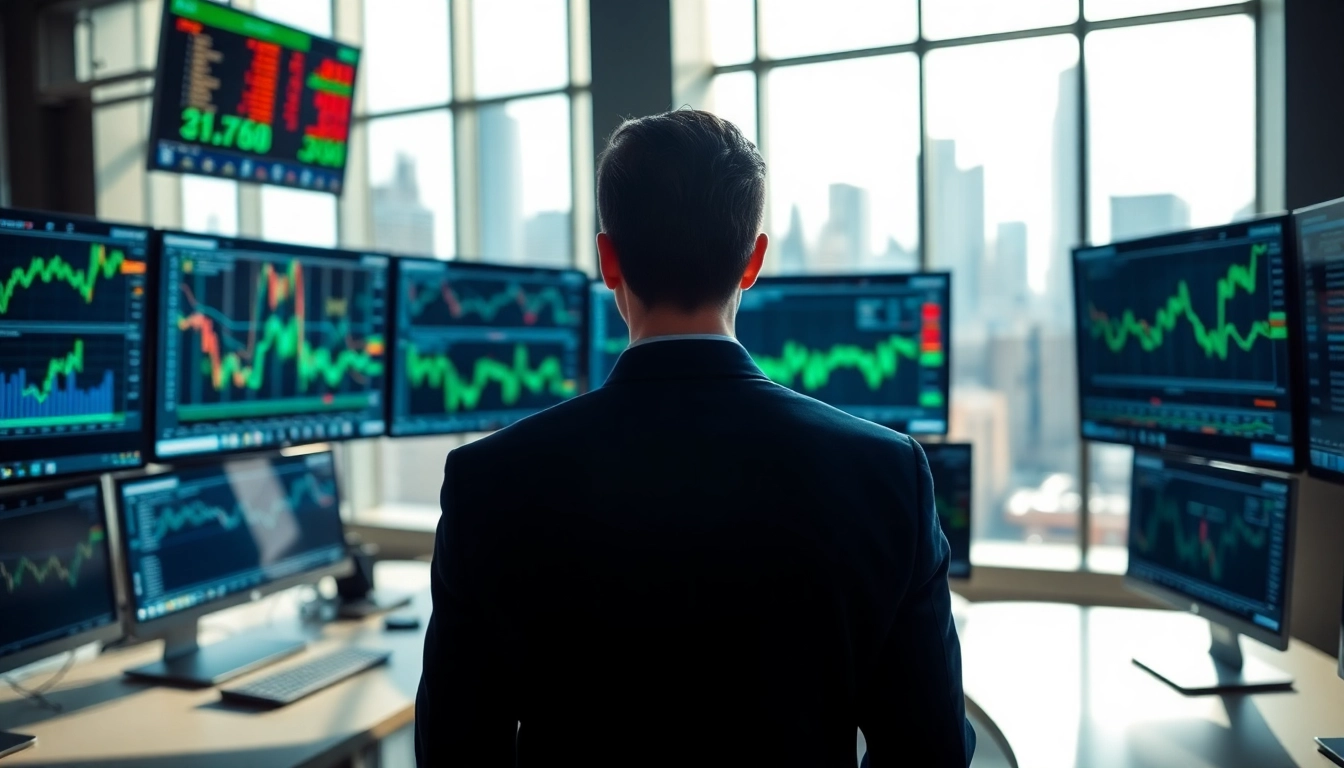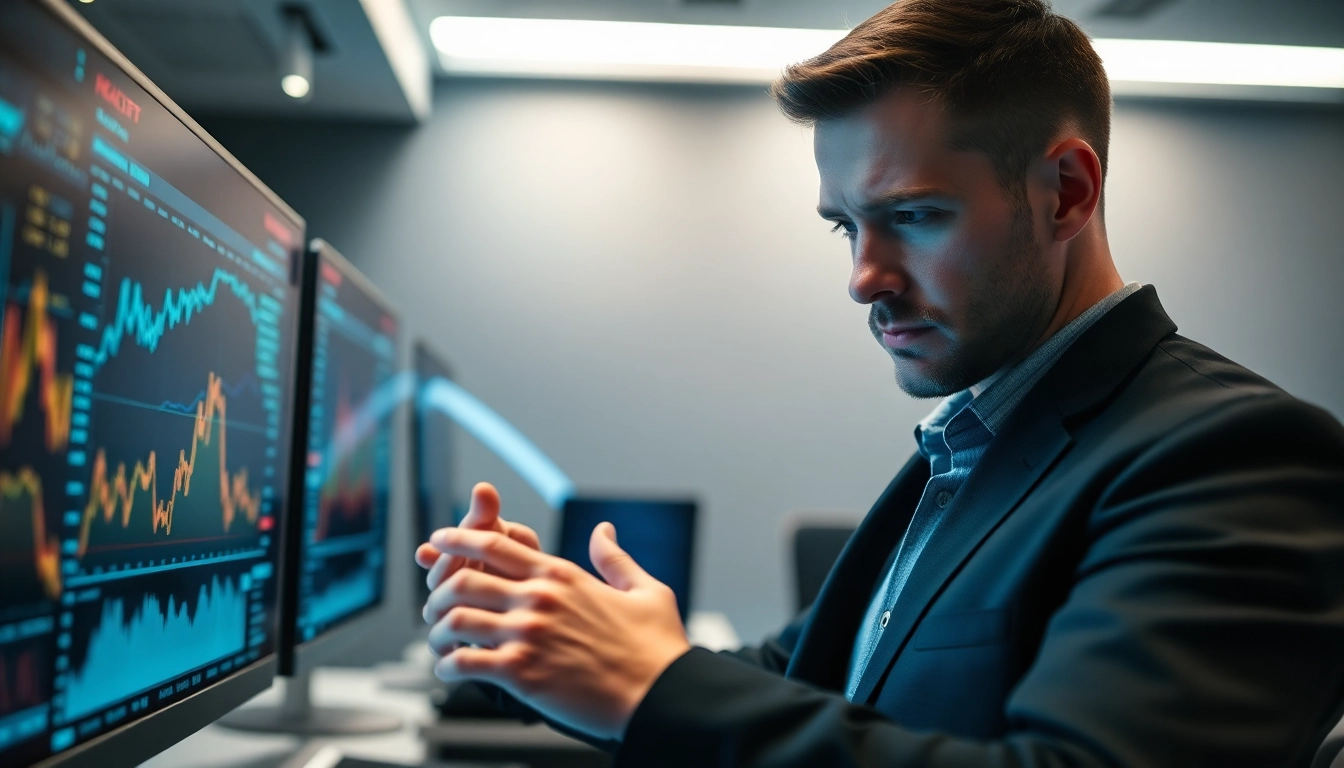Understanding Trade Futures
Futures trading represents a powerful opportunity for traders and investors looking to leverage their market knowledge and make calculated profits. Unlike standard investment models, futures trading allows participants to agree upon the buying or selling of specific assets at predetermined future dates and prices. These agreements, known as futures contracts, offer a flexible means to speculate on the price movement of various commodities, currencies, or financial instruments. Whether you are a seasoned market player or a novice seeking to expand your investing repertoire, this comprehensive guide will take you through the essentials of trade futures, including definitions, benefits, trading strategies, and future trends.
What Are Futures Contracts?
A futures contract is a legally binding agreement between two parties to buy or sell a specific asset at a predetermined price at a specific time in the future. These contracts are standardized and traded on exchanges, with variations available for different commodities and financial instruments. The assets covered by futures contracts can range from agricultural products such as corn and wheat to financial instruments like stock indices and interest rates.
Futures contracts are categorized into two primary types: long and short. A long position means the buyer anticipates that the price of the underlying asset will rise, while a short position indicates that the seller believes the price will fall. This mechanism allows traders to hedge against market fluctuations or speculate on price movements, contributing to their overall investment strategy.
Futures are not merely limited to commodities; they also encompass financial products. For instance, index futures track specific market indices, while currency futures involve predetermining exchange rates between different currencies. This variety allows for a wide array of trading strategies, catering to different investor profiles.
Key Benefits of Trading Futures
Engaging in futures trading comes with a set of distinctive advantages that attract a diverse range of investors. Here are some of the most compelling benefits:
- Leverage: Futures contracts typically require an initial margin deposit, allowing traders to control a large position size with a relatively small amount of capital. This magnifies potential returns but also increases risk.
- Liquidity: Major futures markets are highly liquid, offering traders a more stable environment with less price variability. The ability to enter and exit positions readily can significantly enhance trading efficiency.
- Hedging Opportunities: Futures provide an essential mechanism for investors and companies looking to mitigate risks associated with price fluctuations in underlying assets. This is particularly important in industries with volatile commodities.
- Diverse Asset Classes: The availability of various asset categories, including commodities, indices, and currencies, allows investors to diversify their portfolios while pursuing speculative and hedging strategies.
- Accessibility: With advancements in trading technology and the proliferation of online brokerage firms, futures trading has become accessible to individual investors, democratizing participation in this segment of the financial market.
Types of Futures Markets
Understanding the distinctions in futures markets is essential for developing a successful trading strategy. The primary types include:
- Commodity Futures: These contracts cover physical goods such as agricultural products, energy resources, and metals. Traders in this market can speculate on commodity prices or hedge against fluctuations that could affect production or operational costs.
- Financial Futures: These involve contracts based on financial instruments like currencies, interest rates, and stock indices. They allow investors to manage financial risk or speculate on market movements.
- Index Futures: Index futures reference a stock market index’s value, allowing investors to speculate on the future performance of that index. This type of contract is commonly used to diversify portfolios or increase risk exposure while hedging other parts of investments.
Getting Started with Futures Trading
For aspiring futures traders, understanding how to navigate the markets effectively is crucial. This section delves into the critical steps involved in setting up for futures trading, establishing accounts, and managing funds.
Setting Up Your Trading Account
The first step in trading futures is setting up a trading account with a reputable brokerage that offers futures trading services. Traders will need to complete an application that includes personal financial information and trading experience. Before approval, brokerages may also require clients to demonstrate their understanding of futures trading and the associated risks. Here are some considerations:
- Account Types: Futures brokers offer different account types, such as standard or margin accounts. Margin accounts enable traders to control larger positions using leverage.
- Minimum Deposits: While the minimum deposit requirements vary, many brokers require a minimum deposit to open a futures trading account. This could range from a few hundred to several thousand dollars, depending on the broker and chosen trading strategy.
Choosing the Right Broker
Choosing the right broker is paramount for successful futures trading. Here are key factors to consider:
- Commission Rates: Commissions can vary significantly among brokers, and lower rates can enhance trading profitability. Review fee structures carefully to understand how they could affect your trading performance.
- Trading Platforms: Evaluate the broker’s trading platform for user-friendliness, features, and necessary tools for analysis. A robust platform can enhance trading efficiency.
- Customer Support: Reliable customer service is essential for resolving any issues that may arise. Choose a broker that offers support through multiple channels.
Understanding Futures Margins
Futures margins are essential concepts in trading. They represent the required deposit that a trader must maintain to enter into a contract. Understanding how margins work can help traders manage risk more effectively. Key points include:
- Initial Margin: This is the upfront deposit required to open a futures position. Variations depend on the contract type and can fluctuate based on volatility.
- Maintenance Margin: Once a position is established, traders must maintain a certain balance in their accounts. If the balance falls below this level due to market fluctuations, a margin call will be issued, requiring additional funds.
Strategies for Successful Futures Trading
Successful futures trading requires the application of effective strategies that blend market research, risk management, and emotional control. Below are key strategies that can enhance trading outcomes.
Technical Analysis Techniques
Many traders rely on technical analysis to predict future market movements. This involves analyzing statistical trends from historical price data using various tools, such as:
- Charts: Various chart types (line, bar, candlestick) serve as visual representations of price movements and trends.
- Indicators: Moving averages, RSI, and MACD are commonly used indicators that help traders make informed decisions based on price patterns and volume trends.
Risk Management in Futures Trading
Implementing a solid risk management strategy is critical to preserving capital in futures trading. Here are some essential practices:
- Position Sizing: Determine the size of each trade based on your account size and risk tolerance. Avoid exposing too much capital to a single trade.
- Stop-Loss Orders: Establishing stop-loss orders helps to limit potential losses automatically if the market moves against your position.
- Diversification: Avoid concentrating all investments in one asset class. Diversifying across different commodities or financial products can mitigate risk.
Utilizing Market Indicators
Market indicators provide insights into market movements and help traders make data-driven decisions. Some common indicators include:
- Sentiment Indicators: These measure traders’ overall market sentiment and can highlight potential market reversals.
- Economic Indicators: Key economic data such as GDP growth, unemployment rates, and inflation can significantly impact futures markets and guide strategic decisions.
Common Pitfalls in Trading Futures
While futures trading can be profitable, several common pitfalls can lead to losses if left unaddressed. Understanding these challenges is vital for sustaining trading success.
Emotional Trading Mistakes
Emotional trading can cloud judgment, leading traders to make impulsive decisions. Awareness of emotional triggers is essential for maintaining a disciplined approach. Strategies to combat emotional trading include sticking to a trading plan and avoiding overtrading during market volatility.
Overleveraging in Futures
Leverage can amplify profits, but it can also magnify losses. Traders must exercise caution and maintain a careful balance of margin use. Strategies like employing fixed stop-loss levels can help manage exposure effectively.
Neglecting Market Research
Failing to conduct thorough market research can lead to uninformed trading decisions. Traders should regularly review market reports, economic indicators, and geopolitical developments that can significantly affect futures prices.
The Future of Trading Futures
As the financial landscape evolves, futures trading is increasingly shaped by technological advancements and global events. Understanding these trends will better prepare traders for the coming years.
Trends Influencing Futures Markets
Emerging trends, including the rise of algorithmic trading and the growing use of artificial intelligence for market analysis, are reshaping the futures landscape. Traders must stay informed about technological advancements to leverage them effectively.
The Impact of Global Events
Macroeconomic trends, geopolitical events, and global shifts can significantly impact futures markets. Traders must be aware of the broader economic indicators, along with specific events that could trigger volatility in the markets.
Innovations in Trading Technology
Continuous advancements in trading platforms, mobile trading applications, and algorithmic tools are enabling traders to execute strategies more efficiently than ever before. Staying ahead of these innovations is crucial for maintaining a competitive edge in the dynamic world of futures trading.



